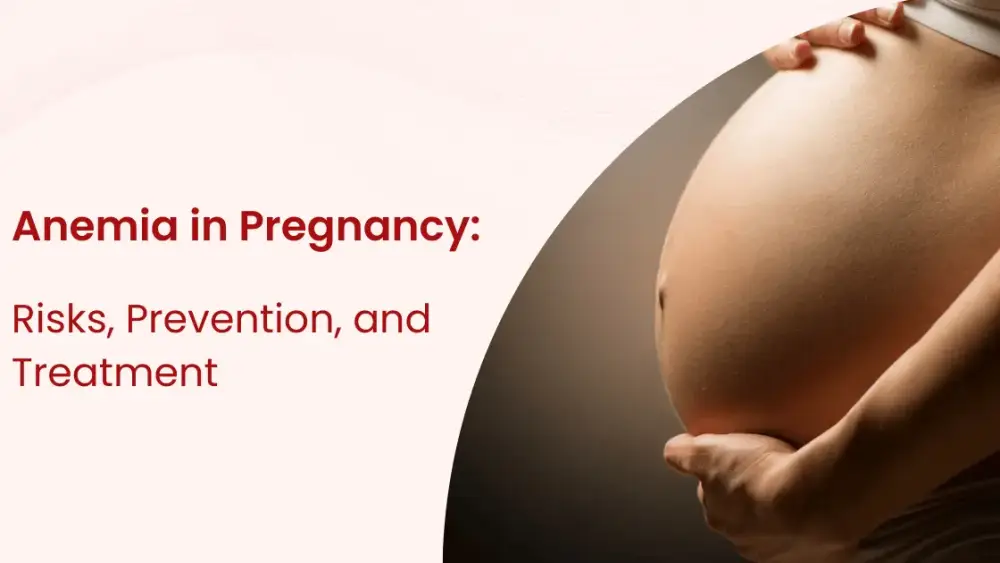
Anemia in pregnancy is a condition characterized by low hemoglobin levels, which can have serious consequences for both the mother and the developing fetus. In this comprehensive guide, we will explore the types, causes, signs, and symptoms of anemia in pregnancy. We will also delve into the implications of severe anemia and the unique challenges women face. Additionally, we will discuss anemia of chronic disease, a unique aspect of this condition. Most importantly, we will address preventive measures and treatment options to ensure a healthy pregnancy and reduce the impact of anemia on both maternal and fetal well-being.
Types of Anemia
Anemia during pregnancy encompasses various types, each with distinct causes and characteristics. The most common types include:
- Iron-Deficiency Anemia: This is the most prevalent form of anemia during pregnancy, primarily caused by insufficient iron intake or poor iron absorption. It can lead to fatigue, weakness, and compromised fetal development.
- Vitamin-Deficiency Anemia: Deficiencies in essential vitamins like folate (B9) and vitamin B12 can result in anemia. These vitamins are crucial for red blood cell production, and their absence can affect both the mother and the baby.
- Hemolytic Anemia: This type involves the premature breakdown of red blood cells. Hemolytic anemia can be genetic or acquired and may necessitate specialised care during pregnancy.
- Sickle Cell Anemia: Women with sickle cell disease may experience complications during pregnancy, as the condition can exacerbate anemia and increase the risk of complications.
Causes of Anemia
Understanding the underlying causes of anemia in pregnancy is crucial for effective prevention and treatment. Common causes include:
- Dietary Deficiencies: Inadequate intake of iron, vitamin B12, and folate can lead to anemia. Pregnancy increases the demand for these nutrients, making proper nutrition essential.
- Increased Blood Volume: Pregnancy causes an expansion of blood volume, diluting the concentration of red blood cells and potentially leading to anemia.
- Placental Development: As the placenta develops, it may compete with the mother's body for nutrients, potentially affecting iron absorption.
- Underlying Health Conditions: Pre-existing medical conditions like celiac disease, Crohn's disease, or sickle cell disease can contribute to anemia during pregnancy.
- Multiple Pregnancies: Women carrying multiple foetuses may be at a higher risk of anemia due to the increased demands on their bodies.
- Parasitic Infections: In some regions, parasitic infections like malaria can lead to anemia in pregnant women.
Signs and Symptoms
Detecting anemia during pregnancy is essential for timely intervention. Common signs and symptoms include:
- Fatigue
- Paleness of the skin and nails
- Shortness of breath
- Dizziness and fainting
- Headaches
- Cold hands and feet
Severe Anemia Symptoms
Severe anemia during pregnancy poses more significant risks and exhibits more pronounced symptoms. These include:
- Rapid heart rate
- Pale or yellowed skin
- Chest pain
- Extremely cold hands and feet
- Cognitive changes
- Pica (craving and eating non-food items)
Anemia Symptoms in Women
Anemia during pregnancy can manifest uniquely in women, with potential complications that affect maternal and fetal health. Specific symptoms in pregnant women include:
- Preterm birth
- Low birth weight
- Severe fatigue
- Postpartum anemia
- Increased risk of infections
- Reduced tolerance to blood loss
Prevention and Treatment
Preventing and treating anemia during pregnancy is crucial to ensure a healthy outcome for both the mother and the baby. Preventive measures include:
- Ensuring an iron-rich diet
- Regular check-ups
- Folate and vitamin B12 supplementation
- Treating underlying conditions
In severe cases, iron infusions or blood transfusions may be necessary.
Conclusion
Anemia in pregnancy is a complex condition with various causes, implications, and treatment options. Early detection and comprehensive care are essential to ensure the well-being of both the expectant mother and the developing fetus.